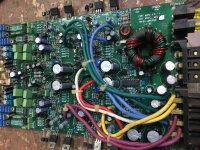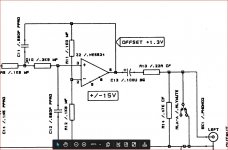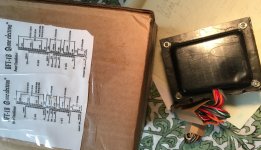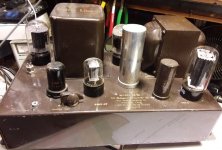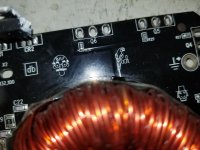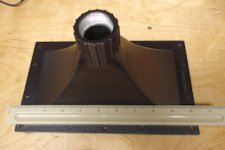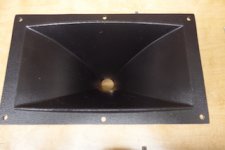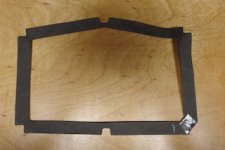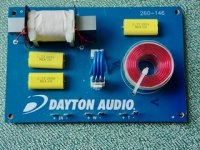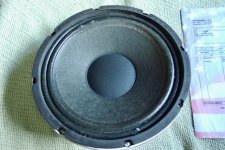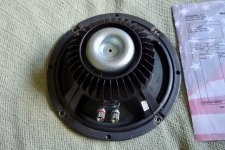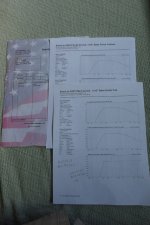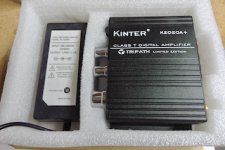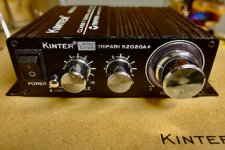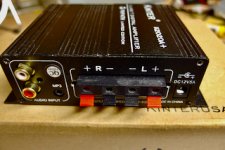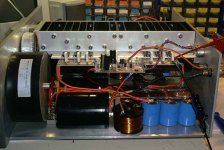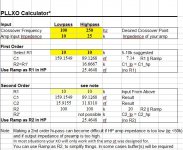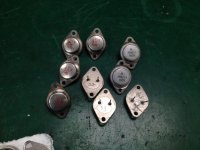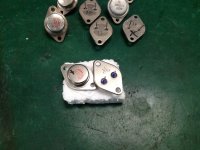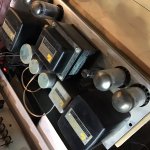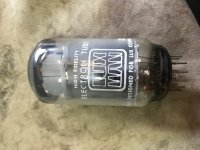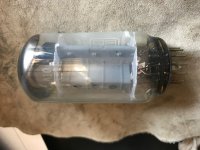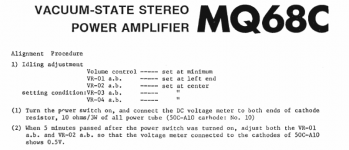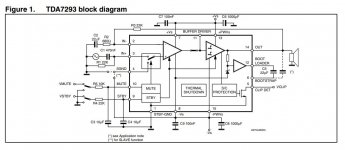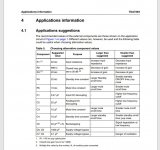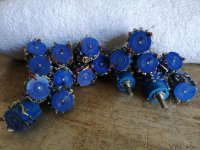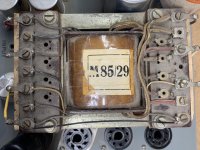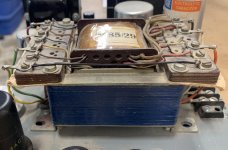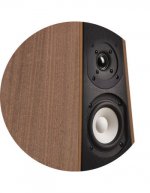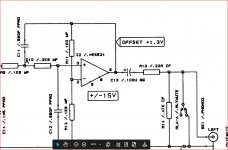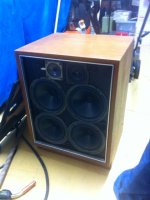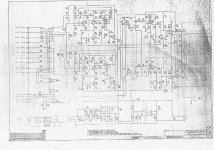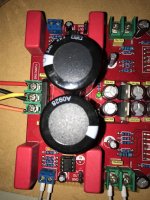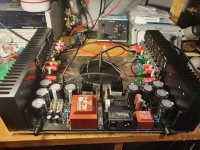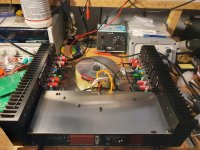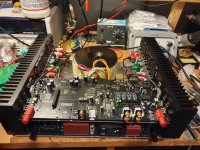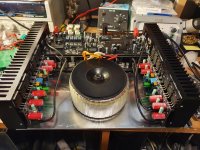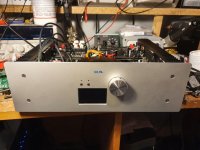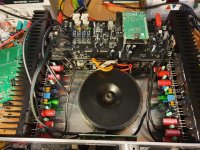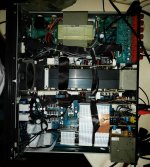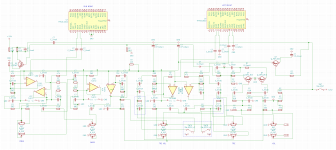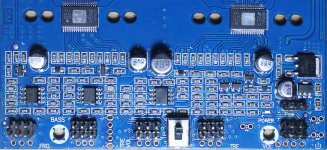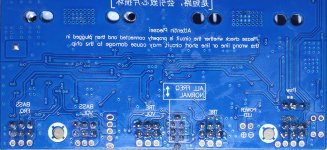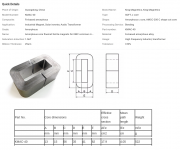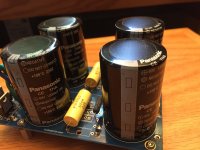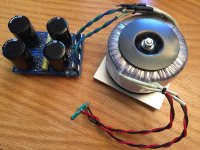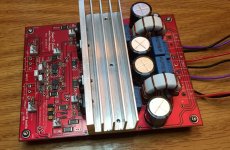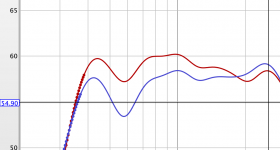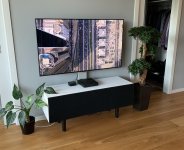Help - Low frequency horn – T18
- By LORDSANSUI
- Subwoofers
- 42 Replies
I’m new on the forum but I’ve being working hard to understand this fascinating audio work.
I’m talking about Horn because the decision was already made for my PA but I’m asking for help regarding what drive should I choose my cabinet.
The target is: Lower frequency as possible with higher SPL considering the model available on the list at the final of the post.
Taking into account three very knew and well successful Low frequency horn designs
Doing reverse engineering comparing all those drivers the main Thiele/Small parameters they have in common are:
High VAS (> 440 L) and also high CMS once those two parameters are direct correlated.
Why high VAS is desirable? What is the negative effect of using low VAS on Low-frequency Horn?
Low QTS (< 2,9)
No doubt about QTS
High BL
No doubt about BL
Low Xmax (< 6mm)
Low Vd (< 0,725 L)
Here I see the first controversial parameter for Horn once usually high Xmax is desired for low frequencies cabinets and also high Vd, but looks like for Horn those variables are desired low to reduce throat pressure and as consequence reduce the distortion. Could someone confirm or explain?
My cabinet is a close of Electro Voice T18 but is not possible to buy the original T18’s drive DL18MT and change the design is not an option, so I’m looking for local driver to install on this cabinet and see what is the best tradeoff it can reach regarding low frequencies and SPL.
I’ve being also trying to study deeply the theory behind the Horn design but without time and experience with this product have been very hard to proper understand the things.
Some references I tried:
I also tried to simulate the T18 cabinet using Hornresp but the result is a little different from the original curve and maybe due to some simplifications, losses or wrong input data.
link for larger image: https://s9.postimg.org/70a5u5gwf/Horn_scheme.png
The throat was cute in sections like indicated below:
link for larger image: https://s18.postimg.org/k9kgdiaop/T18_Horn.png
Hornresp input data
link for larger image: https://s15.postimg.org/mkegrxi23/Hornresp_input_data.png
The result from Hornresp @ 1W right?:
link for larger image: https://s12.postimg.org/xuy0arzf1/Hornresp_T18.png
Original Electro Voice response (Lower SPL @ 60 Hz and higher peak @ 150 Hz:
link for larger image: https://s18.postimg.org/jfh21xzax/T18_Original_SPL_response.png
The question I’m trying to answer is: What would be the best (Lower frequency as possible with higher SPL) and the worst drive option on the list bellow? why? Once I will not use T18 original drive what can I expected to loose and what can I expected to gain?
Note.: Unfortunately also JBL 2240 and Eminence Sigma Pro 18A2 are not available at my market
link for larger image: https://s22.postimg.org/xeqrff429/Subwoofer_availables.png
Thanks in advanced.
🙂
I’m talking about Horn because the decision was already made for my PA but I’m asking for help regarding what drive should I choose my cabinet.
The target is: Lower frequency as possible with higher SPL considering the model available on the list at the final of the post.
Taking into account three very knew and well successful Low frequency horn designs
o JBL 4818 (W-HORN) It uses JBL 2240 drive
o Cerwin Vega B36 (Earthquake) It uses Eminence Sigma Pro 18A2
o Electro Voice T18 It uses Electro Voice DL18MT
Doing reverse engineering comparing all those drivers the main Thiele/Small parameters they have in common are:
High VAS (> 440 L) and also high CMS once those two parameters are direct correlated.
Vas represents the volume of air that when compressed to one cubic meter exerts the same force as the compliance (Cms) of the suspension in a particular speaker.
Why high VAS is desirable? What is the negative effect of using low VAS on Low-frequency Horn?
Low QTS (< 2,9)
A unitless measurement, characterizing the combined electric and mechanical damping of the driver. In electronics, Q is the inverse of the damping ratio. The value of Qts is proportional to the energy stored, divided by the energy dissipated, and is defined at resonance (Fs).
No doubt about QTS
High BL
This is a measurement of the motor strength of a speaker. Think of this as how good a weightlifter the transducer is. A high BL figure indicates a very strong transducer that moves the cone with authority!
No doubt about BL
Low Xmax (< 6mm)
Short for Maximum Linear Excursion. Speaker output becomes non-linear when the voice coil begins to leave the magnetic gap. Although suspensions can create non-linearity in output, the point at which the number of turns in the gap (see BL) begins to decrease is when distortion starts to increase
Low Vd (< 0,725 L)
This parameter is the Peak Diaphragm Displacement Volume — in other words the volume of air the cone will move. It is calculated by multiplying Xmax (Voice Coil Overhang of the driver) by Sd (Surface area of the cone)
.Here I see the first controversial parameter for Horn once usually high Xmax is desired for low frequencies cabinets and also high Vd, but looks like for Horn those variables are desired low to reduce throat pressure and as consequence reduce the distortion. Could someone confirm or explain?
My cabinet is a close of Electro Voice T18 but is not possible to buy the original T18’s drive DL18MT and change the design is not an option, so I’m looking for local driver to install on this cabinet and see what is the best tradeoff it can reach regarding low frequencies and SPL.
I’ve being also trying to study deeply the theory behind the Horn design but without time and experience with this product have been very hard to proper understand the things.
Some references I tried:
- Low-frequency horn design using Thiele/Small driver parameters (1977) By D.B. Keele Jr
- On the Specification of Moving-Coil Driver for Low-Frequency Hon-Loaded Loudspeakers (1979) By W. Marshall Leach Jr
I also tried to simulate the T18 cabinet using Hornresp but the result is a little different from the original curve and maybe due to some simplifications, losses or wrong input data.
An externally hosted image should be here but it was not working when we last tested it.
link for larger image: https://s9.postimg.org/70a5u5gwf/Horn_scheme.png
The throat was cute in sections like indicated below:
An externally hosted image should be here but it was not working when we last tested it.
link for larger image: https://s18.postimg.org/k9kgdiaop/T18_Horn.png
Hornresp input data
An externally hosted image should be here but it was not working when we last tested it.
link for larger image: https://s15.postimg.org/mkegrxi23/Hornresp_input_data.png
The result from Hornresp @ 1W right?:
An externally hosted image should be here but it was not working when we last tested it.
link for larger image: https://s12.postimg.org/xuy0arzf1/Hornresp_T18.png
Original Electro Voice response (Lower SPL @ 60 Hz and higher peak @ 150 Hz:
An externally hosted image should be here but it was not working when we last tested it.
link for larger image: https://s18.postimg.org/jfh21xzax/T18_Original_SPL_response.png
The question I’m trying to answer is: What would be the best (Lower frequency as possible with higher SPL) and the worst drive option on the list bellow? why? Once I will not use T18 original drive what can I expected to loose and what can I expected to gain?
Note.: Unfortunately also JBL 2240 and Eminence Sigma Pro 18A2 are not available at my market
An externally hosted image should be here but it was not working when we last tested it.
link for larger image: https://s22.postimg.org/xeqrff429/Subwoofer_availables.png
Thanks in advanced.
🙂
